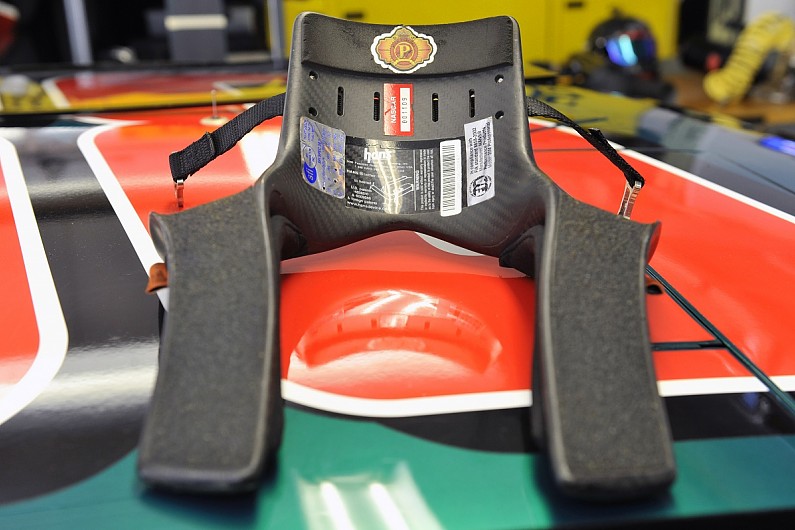by Rutvik Bhaskar Perepa
Dr Robert Hubbard, the co-inventor of the single most important safety device in Motorsports, died this week after a long battle with Parkinson’s disease, aged 75. The Head and Neck Support (HANS) device, released in 1990, saved countless lives, however, it was not actually considered for official testing in professional motorsports until after the fatal crash that killed Roland Ratzenberger in 1994.

Ironically, after being invented in USA with IMSA’s Jim Downing as a tester, the HANS device was never properly accepted by drivers until NASCAR legend, Dale Earnhardt, died in the final race of the 2002 season. Formula 1 mandated HANS from 2003, after extensive testing by Mercedes from 1996 till 1998, which showed exceptional results even using a broken version of the device!
Mercedes originally had an elaborate airbag system in partnership with the FIA that produced similar results to the HANS, but was extremely expensive.
The test was courtesy of Charlie Whiting who had arranged a meeting with Dr Hubbard in 1996, after Dr Sid Watkins took notice of the device when good friend, Senna, died along with Ratzenberger on that fateful weekend in 1994.

The Motivation
Hubbard’s entire career revolved around automotive safety. He received his PhD from the University of Michigan, where he studied the physical and mechanical properties of the human skull at the school’s Highway Safety Research Institute. He went on to specialize in biomechanical engineering at General Motors, studying crash-related injury and engineering early crash-test dummies beginning in the 1970s.
Dr. Hubbard first partnered with IMSA legend, Jim Downing, following a fatal IMSA crash in 1981. Together, they began to develop what became known as the HANS unit in an effort to prevent fatalities caused by basal skull fractures, identified among a range of possible injuries as the most lethal.
In addition to receiving a US Patent for the device, Wayne State University also trialed the HANS device on crash test dummies which was the first ever recorded trial.

The device is a U-shape bend that settles on the shoulders of the driver and the neck settles onto a head-neck rest. It features two straps that go onto the helmet from the head-neck rest.
In racing categories, when the car crashes in a head on collision or on hard braking, the driver is thrown forward. The shoulder belts restrain the torso from moving forward. So the energy is transferred to the head via the spine causing the head to articulate forwards to a point where the bones and muscles at the top of the neck can no longer hold the skull without sustaining serious injury.
Testing by Wayne State University displayed stunning results. Where over 80% of energy during a crash is transferred to the head, the HANS device cut down this amount to a point of minimal head injury.
Series that adopted HANS
Formula 1 fully mandated the HANS device in 2003 with CART mandating it after the deaths of Gonzalo Rodriguez and Greg Moore in 1999. NASCAR, IMSA and NHRA all followed suit by the end of 2005, after losing legends and stars in their respective series.
Hubbard’s findings united various series across the globe to take a vested interest in improving safety. This won him the Autosport Pioneering Innovation award as an official way to recognize his contribution that saved thousands of lives.
Rutvik Bhaskar Perepa is a student at The University of Manchester working towards a MEng in Mechanical Engineering hoping to be on a placement after Year 3. He has had the privilege to travel around his home country, India and discover the rich heritage and diversity. His personal interests include Food and travel, history, Sport among many others. Often found in discourse on various issues ranging Engineering to Religious Practices, he never shy’s away from being expressive. He believes in being open minded, empathetic and analytical is the key to problems posed on a daily basis.


